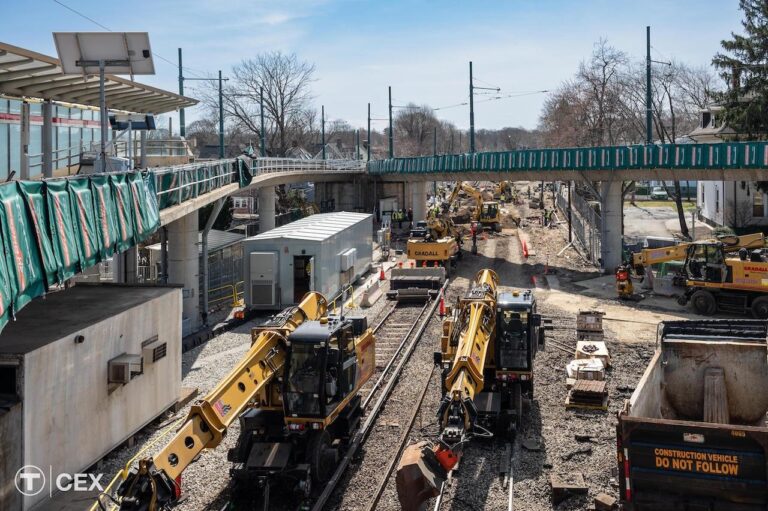The Massachusetts Bay Transportation Authority (MBTA) Board has officially endorsed a comprehensive $9.8 billion capital spending plan aimed at modernizing and expanding the region’s transit infrastructure. The enterprising investment will target key improvements across commuter rail, light rail, and subway operations, addressing aging equipment and enhancing service reliability for millions of daily riders. This spending plan signals a major commitment to sustaining and upgrading Boston’s transit network to meet growing demand and future challenges.[[1]]
Table of Contents
- MBTA Board Approves Ambitious Capital Investment to Modernize Transit Infrastructure
- Focus on Safety Upgrades and Accessibility Improvements Across the Network
- Funding Allocation Targets Fleet Replacement and Technology Enhancements
- Experts Recommend Accelerated Implementation to Minimize Service Disruptions
- Final Thoughts
MBTA Board Approves Ambitious Capital Investment to Modernize Transit Infrastructure
The MBTA Board has given the green light to a transformative $9.8 billion capital investment plan aimed at overhauling the region’s transit infrastructure over the coming decade. This unprecedented commitment seeks to address long-standing system challenges by modernizing aging equipment, expanding capacity, and enhancing service reliability for millions of daily riders. Among the key priorities are:
- Upgrading commuter rail locomotives with state-of-the-art technology,including rebuild programs for F40PH and MP36 diesel units that promise improved efficiency and environmental performance
- Revitalizing light rail and subway lines through extensive track work,signal modernization,and station renovations to boost accessibility and comfort
- Investing in safety and sustainability by expanding green energy use and deploying advanced monitoring systems across the network
Stakeholders have emphasized that this strategic investment marks a pivotal step toward a more resilient and customer-focused transit system,capable of meeting the demands of a growing metropolitan population. The plan reflects a collaborative approach, incorporating community input and innovative technologies designed to streamline operations and reduce disruptions. With a focus on both immediate improvements and long-term growth, the MBTA positions itself at the forefront of urban transit modernization in the United States.
Focus on Safety Upgrades and Accessibility Improvements Across the Network
The MBTA’s latest capital spending plan prioritizes critical enhancements to safeguard passengers and employees throughout the transit network.Investments will focus on upgrading signal systems, modernizing infrastructure to reduce accident risks, and implementing advanced safety technologies to enhance real-time monitoring and emergency response. These upgrades are complemented by comprehensive training programs to ensure staff preparedness, underlining the Authority’s commitment to maintaining a secure transit habitat.
Accessibility remains a cornerstone of the MBTA’s strategy, with significant funds allocated to improve station facilities and services for riders with disabilities. Key initiatives include:
- Installation of new elevators and ramps for better station access
- Upgrading signage and audio announcements to assist visually and hearing-impaired passengers
- Enhanced platform edge protections to reduce boarding risks
Collectively, these improvements are designed to foster a more inclusive and safe transit experience, reflecting the MBTA’s ongoing dedication to serving all communities across its network.
Funding Allocation Targets Fleet Replacement and Technology Enhancements
Significant investments within the $9.8 billion capital plan are earmarked for a comprehensive fleet replacement initiative, addressing the aging commuter rail locomotives and passenger cars. The MBTA is prioritizing the upgrade of its F40PH series locomotives, including the ongoing rebuild programs for models such as the F40PH-2C and F40PHM-2C, to enhance reliability and operational efficiency. Through targeted refurbishment and acquisition of modern rolling stock, the authority aims to markedly improve passenger experience and reduce downtime across its network.
Alongside hardware upgrades, technology enhancements are a central focus, aimed at modernizing control systems, safety features, and customer service platforms. Planned investments include:
- Advanced signal and train control system integrations
- Upgraded onboard diagnostics and predictive maintenance tools
- Improved passenger facts and ticketing systems
These improvements collectively seek to foster a more resilient, efficient, and user-amiable transit system, well-positioned to meet future demands while advancing sustainability goals.
Experts Recommend Accelerated Implementation to Minimize Service Disruptions
Transportation experts emphasize the urgency of rapid project rollouts to mitigate potential service interruptions amid the ambitious $9.8 billion capital spending plan.Accelerated timelines aim to synchronize critical upgrades across the MBTA’s sprawling network, minimizing downtime and ensuring that improvements integrate smoothly with existing operations. Detailed sequencing and staging have been urged to avoid compounding delays and to maintain consistent service levels for the daily ridership.
Key recommendations focus on proactive coordination among contractors and MBTA management, highlighting several essential strategies:
- Implementing phased construction to maintain partial service on affected lines
- Leveraging night and weekend work windows to reduce peak hour impacts
- Enhancing communication channels to promptly inform passengers of temporary changes
- Investing in advanced project management tools for real-time progress tracking and adaptive scheduling
Final Thoughts
The MBTA Board’s endorsement of the $9.8 billion capital spending plan marks a significant step toward modernizing the region’s transit infrastructure. With a focus on enhancing safety,reliability,and capacity,the investment aims to address longstanding challenges while positioning the MBTA to better serve its growing ridership in the decades ahead. As project details unfold and funding is allocated, the transit agency and its stakeholders will closely monitor progress to ensure the plan delivers on its ambitious goals. For ongoing coverage of MBTA developments and infrastructure improvements, stay tuned.

